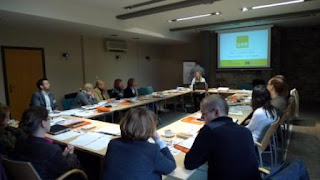
The SEE project, led by Design Wales, has just published Policy Booklet 3 entitled 'Evaluating Design: Understanding the Return on Investment in Companies, National Industry, Programmes & Policies, Economy & Society'.
A lack of knowledge and tools to evaluate the rate of return on design investment is often cited as a severe barrier to advancing the understanding of design’s value among policy-makers and civil servants. With design firmly on the European political agenda as part of the strategy ‘Innovation Union’, policy-makers across Europe will be looking at how design can meet challenges in industry, services and society. However, without insight on evaluating design and its strengths compared with other disciplines, we risk missing key opportunities for consolidating the contribution of design to competitiveness and social innovation in our regions.
This third SEE Policy Booklet provides an overview of current practice in design evaluation and identifies actions to improve these methods. The Policy Booklet notes that there are several different dimensions that must be taken into consideration when investigating design evaluation, which should include micro and macro levels in both the private and public sectors. :Each section of the booklet discusses a different dimension of this framework, exploring how design can be evaluated in different contexts and providing illustrative case studies. The four sections are:
1. Return on investment in design for individual companies
2. Return on investment in design in national industry
3. Return on investment of public funds in design programmes or policies
4. Role of design and its impact on the national economy and society.














































